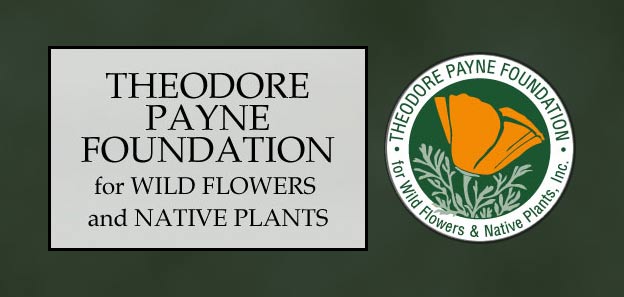(Many residents of Glencrest Hills do not know about the treasure just behind us off Tuxford. Below is an article written by the Theodore Payne Foundation * and published on their website. Please also read about how TPF did during the fire and next steps by Kitty Connolly, Exec. Director & DJ Peterson, Board President.)
In Response to the La Tuna Fire, September 2017
From:
Theodore Payne Foundation for Wild Flowers and Native Plants
10459 Tuxford Street, Sun Valley (La Tuna Canyon), CA 91352 (Click for Map)
818 768-1802 | theodorepayne.org
La Tuna Fire
The La Tuna Fire was first reported on Friday, September 1. Aided by high heat and erratic wind, it raged for three more days. More than 7,000 acres of La Tuna Canyon and the Verdugo Mountains burned before the fire was contained.
The Verdugos, with about 16,000 acres of steep terrain, are surrounded by urban development. The last three substantial fires in the Verdugo Mountains were the 1955 La Tuna Fire (4,306 acres), the 1964 Whiting Woods Fire (6,950 acres), and the 1980 Sunland Fire (6,400 acres). According to Los Angeles County Fire Department records since the 1955 fire, the Verdugo Mountains average 1.1 fires every 3.6 years, each fire averaging 1,371 acres.
Regeneration, not Restoration
The dominant plant communities in the Verdugos are Southern Coastal Scrub, Chaparral, Oak Woodland, and Mixed Riparian Woodland. The La Tuna Fire was concentrated in Southern Coastal Scrub and Chaparral sections that are notoriously fire-prone but resilient. Chaparral fires are characteristically high-intensity and burn dense vegetation entirely to the ground, leaving behind virtually no above-ground growth, yet many species in these communities are able to rebound from fire. Examples of recovery include crown sprouting (the ability to re-grow from underground roots or stems) and seeds that germinate only after a fire, ensuring rapid recovery.
Though it is tempting to want to actively restore vegetation after a fire, intervention can be harmful to the native plants that stabilize slopes and to wildlife that rely on native plants for habitat. Any planting or seeding should be done with extreme caution to avoid harming the recovering plant communities. One typical approach is hydro-seeding, but concerns include: competition from introduced seeds that inhibits germination of existing natives in the seed bank, introduction of inappropriate species for the site, reduction of biodiversity, and failure to stabilize soils before the winter rains fall.
What Can I Do?
In the short term, installation of jute netting or straw wattles can reduce erosion without inhibiting long-term recovery of native plants. Next winter, with luck, gentle rains will help native plants stabilize the slopes. Deep-rooted natives, such as laurel sumac, re-sprout readily and will hold steep slopes much more effectively than anything that is newly planted.
Fires in Southern California are inevitable, and everyone should be prepared for them. The most important step that you can take to ensure the safety of your home is to comply with LAFD’s standards for defensible space and FireWise landscaping. The Theodore Payne Foundation has created a Fire Management Demonstration Garden that is compliant with all the standards and open for public viewing during regular business hours.
Next, pick plants for your garden that are local to your area. Then, in the event of a fire, wildlife can take temporary refuge at your home. They would appreciate a little water, as well.
Lastly, be patient with nature. Fire has been part of Southern California’s ecology since long before humans arrived here. It helps to remember that the mountains are resilient, and we must give them time and space to regenerate. For now, take advantage of this opportunity to watch natural succession in action, and please check back with Theodore Payne Foundation for updates on how the plants in the Verdugo Mountains are responding to this historic fire.
Resources
- Theodore Payne Foundation for Wild Flowers & Native Plants
- Los Angeles Fire Department, How to Have a Fire-Wise Home,
- CalFire
- California Chaparral Institute
- California Fire Science Consortium
- National Fire Protection Association
- Vascular Flora of the Verdugo Mountains and San Rafael Hills, Los Angeles County, California
* Theodore Payne Foundation | Native California Plants
The Theodore Payne Foundation for Wild Flowers and Native Plants is a 501(c)3 nonprofit organization dedicated to the understanding, preservation and use of California Native Wild Flowers and Plants. Please Help Support this Organization by Donating, becoming a Member or Volunteering!



Recent Comments